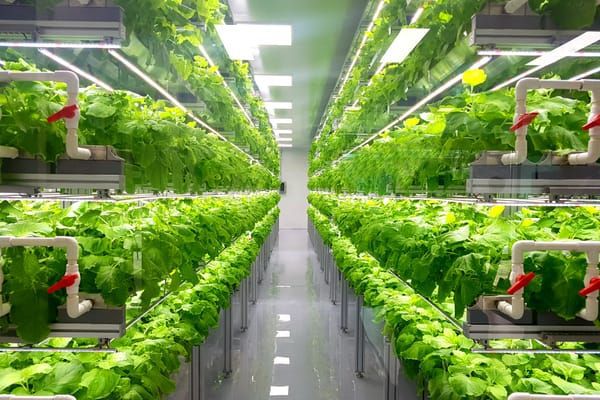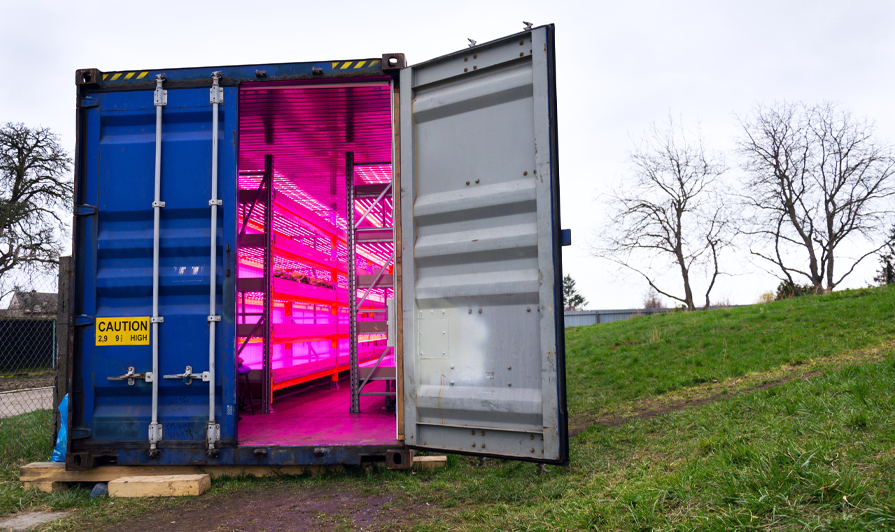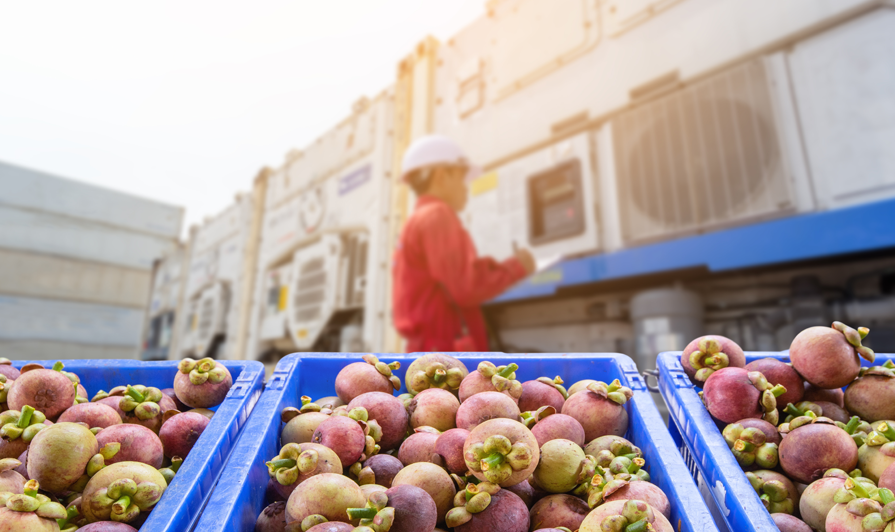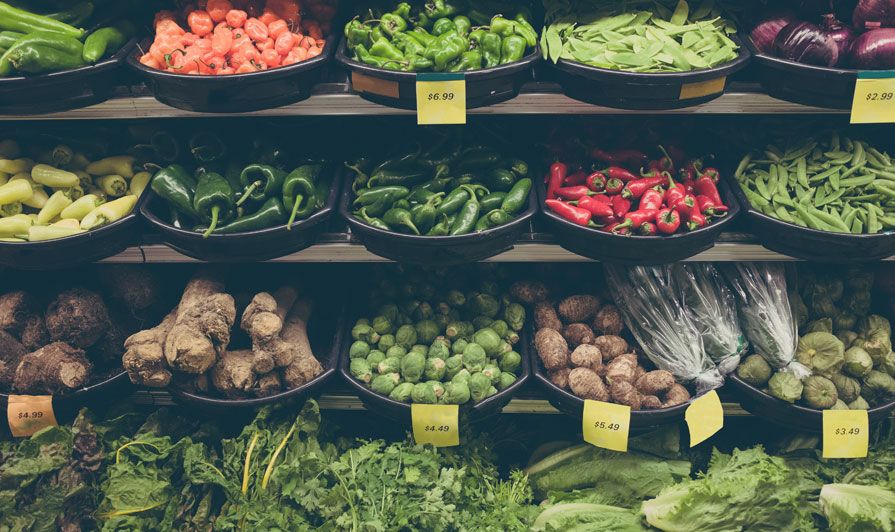- Rent, Lease, or Purchase
- |
February 2, 2021
Hydroponics in Shipping Containers: Radicalizing the Way We Grow

Shipping containers offer a highly conducive space for hydroponics. Their durable bodies and weather-proof construction allow for highly sustainable growing environments. The modular architecture also makes it easy to fit all essential systems for growing plants indoors.
Recent research suggests that the market value of hydroponics stands at $9.5 billion with a potential to reach $17.6 billion by 2026. Hydroponics in shipping containers provides an accessible way to tap into this growing market.
What Is Hydroponic Farming?

While traditional farming uses soil as a growing medium, hydroponics uses nutrient-rich water to grow herbs, vegetables, and greens. It requires about 90% less water than conventional processes. It also minimizes the risks due to extreme weather changes, pests, and growing seasons.
Methods of Hydroponics
Different hydroponic systems boast distinct advantages and drawbacks. The design and system you want to use will depend on your budget, crop size, and plants you intend to cultivate.
Here are some typical nutrient-delivery methods for hydroponics:

Wick
One or more wicks can help draw the nutrient solution in a sterile medium like perlite, vermiculite, or rock wool.
Drip
The technique uses a system of pumps and drip lines to deliver nutrients to individual saplings.
Ebb and Flow
A timed pump helps fill and drain the growing table where you plant vegetables using an Ebb and Flow system.
Nutrient Film Technique (NFT)
The NFT uses a system of plants suspended in a plastic basket or Rockwool cubes and supply lines. Nutrient-rich water passes through the delivery tubes to the sapling's roots and then drains into the main reservoir.
Water Culture
A styrofoam (or similar material) bed filled with nutrient solution forms a 'water culture' that can help you grow a water-loving crop like lettuce and spinach.
Aeroponics
Unlike other systems that require a medium, an aeroponics system helps grow plants with their roots suspended in the air. A continuous mist helps provide nutrients directly to the plant's roots.
Shipping Containers for Hydroponic Farming

One of the essential prerequisites for hydroponic farm management is providing a safe space for plants to grow. If you want your plants to thrive, you must create specific conditions that support their growth. Here's where we apply the concept of Controlled Environment Agriculture (CEA).
Controlled Environment Agriculture
You can maintain the ideal temperature and humidity in your home with the help of heating and air conditioning equipment. Irrespective of whether it's raining or snowing inside, the technology will help you maintain a safe and comfortable space.
It’s a little like building a tiny home for your plants that protects them from weather changes, pests, and more. Hydroponic freight farms also use the principles of CEA.
When plants grow outdoors, they're at the risk of weather, animals, pests, nutrition depletion, and more. These risk factors can significantly alter the flavor, freshness, and produce quality. A CEA helps remove these risks and eliminate the uncertainties in food production by creating a sustainable growing environment.
Some factors that you can maintain in a controlled environment are:
- Temperature
- Humidity
- Carbon-dioxide CO2 levels
- Light
- Nutrients
Controlling these aspects allows you to create high-quality food with less water consumption, energy, space, and other resources. While CEA works for any controlled space like greenhouses, container farming technology uses shipping containers to create a controlled atmosphere in a confined space.
Benefits of CEA

Creating a controlled space like shipping containers allows you to grow more crops in a smaller area and increase the crop yield by providing appropriate nutrition and lighting. You can ensure adequate availability and food supply regardless of the outside climate, location, and seasonality.
Since shipping container hydroponic farms are safe from pests and locusts, you can enjoy organic, pesticide-free produce. Another advantage of freight farms and CEA farming is that you can grow food with minimal water and energy consumption.
Basic Setup of Hydroponic Container Farms/Freight Farms

Custom-built containers offer a secure space to create your hydroponic farm. Many companies provide ready-to-use hydroponic containers and pure greens container farms.
Hydroponic farming requires that you carefully control soil, water, and nutrient levels, together with the correct levels of light, humidity, and temperature.
Knowing and understanding your plants before purchasing a large project will help alleviate anxiety, ease the learning curve, and ensure a successful first crop. You can also DIY if you have adequate system knowledge.
Creating a farm in a container requires the following components:
- Shipping containers (obviously!)
- Growing area - trays, racks, chambers, or shelves
- Irrigation system - pump, valves, piping, drainage, reservoir, and nutrient bins
- Lighting systems - LED lights and wiring
- Atmospheric and environmental controls - Insulation, ventilation, and air conditioning.
- Monitoring and climate control - Humidity, temperature, light sensors, and alarms.
Traditional Hydroponics vs. Container Hydroponics

Container freight farms offer an excellent alternative to traditional hydroponics, thanks to their immense versatility and ease of construction. Besides hydroponics, you can also build efficient container farms with used containers.
Shipping containers are highly stackable, meaning you can place multiple containers on top of each other to apply vertical farming techniques to hydroponics. Stacked units can help you gain maximum output with minimum space requirements.
One of the most significant advantages of traditional hydroponics is building the growing space at any location. Shipping containers offer immense portability and ease of movement, helping you grow food wherever you want using hydroponics. So, if you move to a different location, you can carry your farm with you!
Building a traditional greenhouse or hydroponic housing unit can be time-consuming and expensive. Meanwhile, used shipping containers are readily available. Since containers offer a ready-to-use building, you already get a head start in construction, allowing you to save immensely on labor costs.
Cost of Hydroponic Container Farms

We can divide the cost of building and running freight farms into two categories:
- Capital expenses
- Operational expenditures
Capital costs include the price of the container unit and growing systems. You can buy used or refurbished containers at about $3000-$7000, while the annual operating costs of a hydroponic system range between $8,000 and $16,500.
If you do not want to DIY, you can purchase pre-built freight farms equipped with hydroponics for about $50,000-100,000.
Operational costs include buying seeds, water, electricity, and farm management (labor, cleaning, maintenance, etc.). These expenditures vary depending on the plants you're growing, nutrition requirements, frequency of care, etc.
Examples of Freight Farms
Although the idea of using containers is relatively new, it has rapidly gained popularity among farming enthusiasts. Many hydroponic farmers have started using shipping containers to build self-sustained freight farms.
In addition, many startups and businesses now offer pre-built hydroponic container farms equipped with all systems and accessories. Here are some real-life examples of hydroponic container farms:
The Leafy Green Machine (LGM), Missouri
Fresh Ideas, a food service management company, and Maryville University collaborated to build a container-based hydroponic farm for growing leafy greens. Watch how LGM has grown into full-fledged farming business.
Pure Greens Container Farms, Arizona
Pure Greens is a container farming technology manufacturer that provides ready-to-use 40 ft. insulated hydroponic containers. If you're planning to become a freight farmer, you can buy their units to start growing your favorite herbs and microgreens.
Fare House Farms, Texas

A father-daughter duo started their own hydroponic produce business in shipping containers. Today, Fare House Farms remains one of the most-loved brands at farmer’s markets across the state.
Here's a list of small businesses that use hydroponic containers:
- Corner Greens
- Harvest
- Eeden Farms
- Bright box Farms
- New Age Provision Farms
- Town to Table
Conclusion
Hydroponic freight farms are a modern solution that helps you grow food with minimum resources and environmental impact. You can use shipping containers to build a secure and portable space for hydroponics in a short turnaround time. Compared to traditional farming, container hydroponics is more flexible, mobile, and easy to build.
Mobile Modular Portable Solutions provides high-quality new and used shipping containers for all kinds of residential, commercial, and industrial applications.
Call us at 866-691-6474 or request a quote to learn more about our container solutions.
Frequently Asked Questions
What Plants Can You Grow in Hydroponic Containers?
If you install the correct nutrient-delivery system in a container, you can grow almost any plant hydroponically. However, the yield of these crops can vary significantly. Vegetables and fruits like tomatoes, strawberries, lettuce, peppers, chives, cucumbers, radishes, basil are easy to grow and offer an excellent yield.
How Do You Grow Plants in Shipping Container Farms?
Shipping containers offer a secure and weather-proof space for growing herbs, fruits, and vegetables indoors. You can use hydroponic, aquaponic, or other indoor systems to grow plants.
A container's modular build and easy-to-modify construction offer ample space to install shelves, nutrient-delivery systems, LED lighting, heating, ventilation, and temperature control systems. You can also include sensors and monitoring systems to assess the plant yield and create the ideal growing conditions.
How Much Does a Shipping Container Farm Cost?
A pre-built, ready-to-use container farm equipped with hydroponics can cost anywhere between $50,000-$100,000. You can also buy a used or refurbished container and install the systems you want. The total expenses will depend on the size of the container, the system complexity, and the utilities that you'll install.
Related Blogs



Subscribe to Our Blog
Enter your email address to subscribe to the blog and receive the notification of new posts by email.
Thank You for Subscribing to Our Blog!
Stay tuned for upcoming emails with valuable content that we hope will enhance your experience with our brand.
Both Pardot and mg360 form submissions failed.
